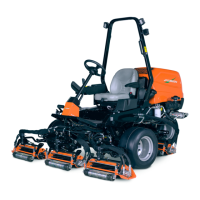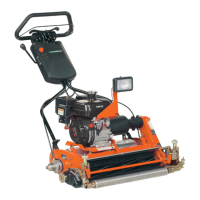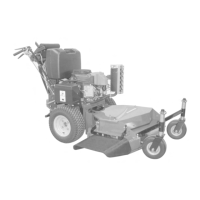6-16 4181383 First Edition
HYDRAULICS
6
Traction Control Circuit Schematic
and Theory of Operation
See Figure 6-10.
System Conditions:
• Engine running
• Traction control switch on the ON position
NOTES
• See “Traction Control Circuit—Theory of Operation”
on page 4-36, for the electrical operation of this
circuit.
• All cylinders operate the same way; left rear cylinder
shown.
The purpose of the traction control circuit is to allow the
transfer of weight from the cutting units to the wheels to
improve traction. This is done by applying slight upward
pressure on the cutting units.
Operating-pressure oil is supplied to port “P” of the lift
valve by the steering circuit. (See “Steering Circuit
Schematic and Theory of Operation” on page 6-10.)
When the traction control is activated (On), the controller
activates the raise solenoid valve (On) and the lower/
proportional solenoid valve (On). The controller pulses
the electrical signal to the lowering proportional solenoid
valve to meter the amount of oil pressure in ports “C1”
through “C5.” The metered oil pressure is approximately
400 psi (27 bar) and is adjustable through the traction
control calibration. If the traction control is improperly
calibrated it can raise the decks off the ground. The oil
pressure allowed to build up in the circuit allows the
cutting units to transfer weight to the wheels improving
traction.

